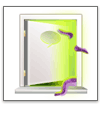
German networking service OpenBC Xing is going public and expects a three figure million revenue. Kudos, they will need this money under their belts for some likely lawsuits from Friendster, if the announced aggressive international rollout is about to come--several parts of Xing's website run afoul the Friendster-patent, for example its search-function, the invitation-system and displaying the path of connection between two given members.
I lately read somewhere that Xing will be the new LinkedIn-killer in the USA. Frankly, Open Business Club AG should first start to develop some peculiar USPs instead of copying LinkedIn's user-interface...
:P <- Lutz
Xing geht an die Börse
Die deutsche Netzwerkler-Plattform OpenBC Xing geht an die Börse und erhofft sich einen 3-stelligen Millionenerlös. Viel Glück, den werden sie vermutlich auch für etwaige Patentklagen von Friendster benötigen, wenn die angekündigte aggressive internationale Markteinführung kommt -- diverse Teilbereiche der Website wären davon betroffen, u.a. die Suchfunktion, das Einladungssystem und die Anzeige des Pfades von Kontakten zwischen zwei Teilnehmern.
Ich habe neulich die Meinung gelesen, daß Xing in den USA der neue LinkedIn-Killer sein wird. Vielleicht sollte die Open Business Club AG dafür zunächst mal anfangen, innovative eigene Alleinstellungsmerkmale zu entwickeln, statt das User-Interface von LinkedIn zu kopieren...
:P <- Lutz
Update:
Interesting enough, since OpenBC's domain is being rerouted to Xing.com, all their service-mails get caught in my mail-providers spam-filter...

